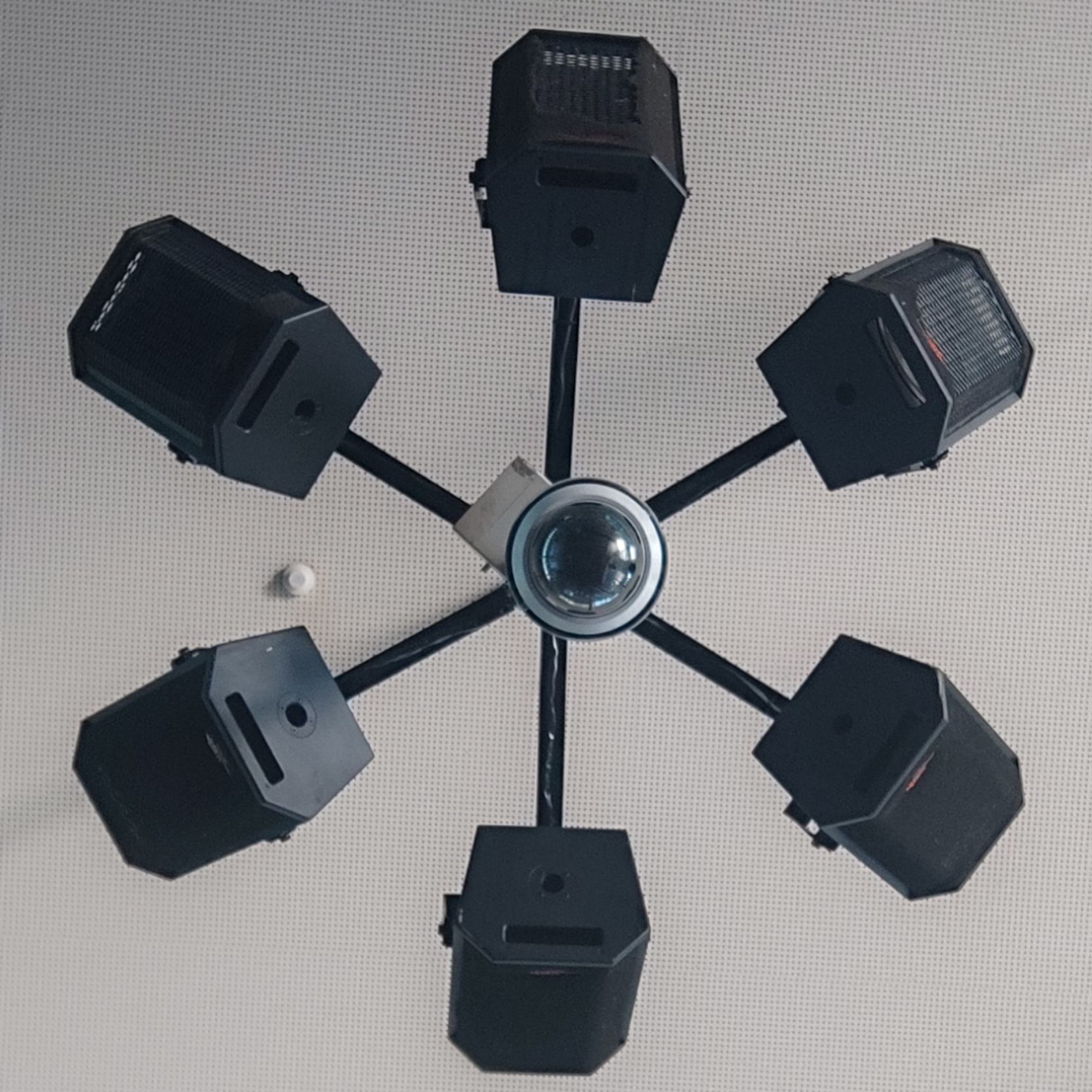Original question by @POTOOOOOOOO@reddthat.com
I use Arch, btw, but I don’t consider it the best (yes I do.) I could easily transition to Fedora, for example (I would never do that,) and be completely happy (I would rather continually hit my head with the metal stapler gun on my desk.)
Hannah Montana Linux
No further arguments needed.
The one, the only, the legend…
Does what I want and gets out of my way.
Bazzite just works, it runs every game I have with zero fuss, it’s easy to run Windows programs / emulators / local LLMs, AND it’s basically unbreakable.
I can’t claim it’s the best, but it’s the best for me right now.
On a gaming laptop I’m using Aurora because KDE Plasma btw (:
Bazzite has a KDE version too. I think it is more popular then the GNOME version of bazzite actually. At least according to the results of the latest steam survey
Yep I use KDE-flavored Bazzite and actually forgot GNOME was even offered! It works deliciously. Came over from Windows last winter finally and boy, the UI alone is just so much nicer.
I had avoided KDE for years due to some multi-screen resolution issues back in the day.
I’d be running gnome, and install a half dozen plugins to make it look and feel closer to Windows It was just a personal preference. Every other update some plugin I was using would be broken. I’d replace it with another plug-in or uninstall it and wait for a fix. Fight fight fight fight fight fight. Some number of years later I tried KDE again, and I realized that it did exactly what I was trying to do in Gnome but it did it out of the box.
I don’t have anything against Gnome. The same way I don’t have anything against OS X’s “window manager” or even Windows 11’s “window manager” they’re just not my preference.
Bottom left navigation, thin, stacked app indicators, bottom right tray. Fractional scaling, widgets.
I tried KDE over a decade ago before using Mint for a while. Then I saw someone’s laptop running vanilla GNOME and thought it looked nice. But a couple of years ago I realised that GNOME’s insistence on hiding settings in “tweaks”/gsettings and generally making it harder to do what I wanted was getting in the way. KDE still has the configurability that I loved when I first started using Linux and GNOME 2, without being an infinite config hellhole like the niche WMs
Because I like compiling everything from source for a 0.2% speed improvement
NixOS. My entire config is source-controlled and I can easily roll back to a previous boot image if something breaks like cough Nvidia drivers. I also use it for my home router and all self-hosted services.
maniacally laughs while trying to avoid eye contact with 19k lines of nix config
Out of all the ways that I have tried in the past, to reproduce not just the initial state, but also the ongoing changes of a disto (ansible, saltstack, chef, bunch of Shell scripts) — nix is by far the shortest. With all of these technologies I would never have dreamed to do this for a single Maschine. But now it’s not only possible, but actually gasp enjoyable!
Mind you, if that is not the problem you want to solve, maybe install just the nix package manager in addition to your distribution, and learn to enjoy it without having to run your whole distribution this way.
You misunderstand! It has also turned into basically a hobby (and recently, a job, lol) to manage nix configs.
Those 19k lines are clean, well-structured and DRY, and do describe every little thing about ca. 30 machines.
Mint is Ubuntu minus everything that makes Ubuntu annoying. That’s why I like it.
I considered to go back to Debian but… eh, I’m too old and impatient for that. Nowadays I mostly want things that work out of the box.
Do things not work out of the box on debian?
From what I remember*, there was always some rough corner. Such as the wi-fi, or the graphics card. Sure, Stable was rock solid, but you always needed something from Testing; and Testing in general was overall less stable than Ubuntu or Mint.
*This was years ago, so it might be inaccurate as of 2025.
Linux Mint has a Debian Edition (LMDE) if you ever wanted a Debian that Just Works.
I did use the first LMDE for some time, and I loved it, it’s a great distro. I don’t recall why I went for the Ubuntu-based Mint later on, I think it was the PPAs?
Can’t say it’s the best, but I love Alpine. It’s light, fast, versatile and easy to use, runs on anything, and despite it being used mostly in containers and VMs, it makes for a great desktop distro aswell. :)
Really? I guess everyone was 15 at some point and hadn’t heard that distro wars are useless 🤣
There is no best. Period.
There is no best. Period.
But there are bad ones. For example Ubuntu and derivatives broke Flatpak support in 25.10. This was known ahead of release but because only Snap matters, the fix will only roll out after release.
So, it’s the worst for you and still the best for others, right?
Arch is the worst because… And the best because…
Same with every other.
In fact I’d argue that every single distro is the best for at least one person.
I use Arch since approximately 2006 or so. I like its stability (yes!), performance, rapid updates and technical simplicity. It never stands in my way and it’s fairly simple to understand, administer and modify. It’s probably the most convenient OS I’ve ever used - sure it takes time/effort to set it up but once you’re past that it’s smooth sailing. It also doesn’t change dramatically over the years (it doesn’t need to) so it’s easy to keep up with its development. Plus, I have a custom setup script for it that installs and sets up all of the basics, so if I ever need to reinstall, I’m not starting from zero.
I am eyeing NixOS as “the next step” but didn’t yet experiment with it too much. Arch is just too comfy to use and the advantages that NixOS brings aren’t yet significant enough for me to make any kind of switch to it, but I consider NIxOS (as well as its related technologies like the Nix package manager) to be the most interesting and most advanced things in the Linux world currently.
If you’re reading this as a newbie Linux user: probably don’t use any of the two mentioned above (yet). They’re not considered entry-level stuff, unless you’re interested in learning low-level (as in: highly technical) Linux stuff from the start already. NixOS/Nix in particular is fairly complex and can be a challenge even for veteran Linux admins/users to fully understand and utilize well. Start your journey with more common desktop distros like Mint, Fedora, Kubuntu.
I’ve been using a debian based system for a dozen years. Then I decided to buy a NAS and turn it into a NixOS driven media server.
JFC I thought I knew linux and I was so wrong.
https://uwuntuos.site/ obvi?
But seriously though, Arch all the way, because it teaches me about Linux and computers, because I can customize all the packages at OS install (without the need for lengthy compiling like Gentoo) and because my Steam games work flawlessly on it.
Void made Linux fun again for me. It gets so much right with the rolling release model.
I started with Mandrake back in 2000 and used Red Hat at school. In 2004 Ubuntu was released and I adopted it for life. I switched from Ubuntu to Xubuntu to Ubuntu MATE to Kubuntu up to this day. It’s the best because of all the quality of life additions, the stability of the LTS releases, the amount of widespread documenation, and general size of the community of users. This makes it a lot more easier to use and get help to troubleshoot any problems. So far it’s been mostly a problem free and easy experience.
Until recently…
I just discovered Zorin OS and started messing around with it in a VM. I gotta say it’s of of the best, most polished Gnome desktop experiences I’ve had so far with their free core version. While I love KDE for it’s desktop experience being the closest to Windows there is, I usually find it has WAY too many customizations to a fault. Some people like this, but I find that the more you mess with configs, the more prone to problems it gets. I also find Gnome to be more well put together and well integrated. The fact the customization options are limited means I spend more time doing what I need to do than messing around with getting my desktop just right. I just hate the default Gnome destop and whatever paradigm they tried to make. That’s why I’ve stuck with Kubuntu for a while. But with Zorin, I think they found the sweet spot. This might be my next install and I might recommend it to anyone who wants to get into Linux over Mint.
I like secureblue the most, because it’s simply the best in class when it comes to bridging the difference between Desktop Linux and GrapheneOS in terms of security. As being secure is at the very top of my priority list, my preference for secureblue -therefore- follows rather naturally.
Because it was my first distro that got me away from Windows. And yes, it’s Mint.









